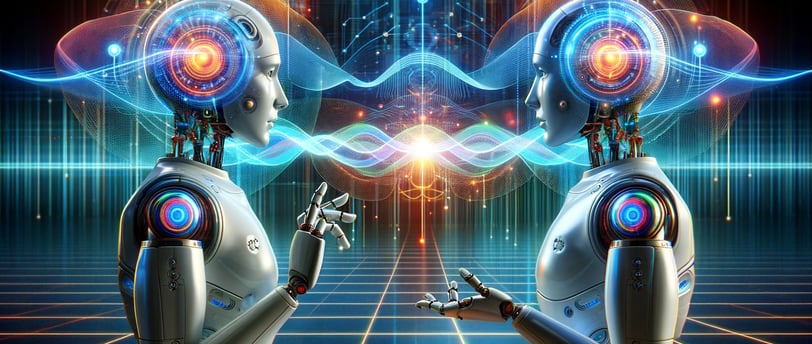AI Machines Teach Each Other
Ever envisioned AI teaching its own kind? Step into a world where this happens, promising a future of collaborative technology.
AI NEWS
3/23/20241 min read


Researchers at the University of Geneva (UNIGE) have made a significant breakthrough in artificial intelligence (AI) by developing a neural network capable of learning new tasks from verbal or written instructions and then conveying these tasks linguistically to another AI, which can then execute them. This development marks a significant step forward, especially in robotics, showing promise for the creation of machines that can understand and interact with each other in complex ways.
The ability to perform a task based solely on verbal or written directions without prior training is a hallmark of human intelligence. This capability allows us not only to execute tasks but also to communicate the process to others, enabling them to replicate the actions. This level of cognitive function has been challenging to replicate in AI, particularly the translation of linguistic instructions into sensorimotor actions and the further explanation of these actions to another AI entity.
Utilizing a pre-existing model, S-Bert, equipped with 300 million neurons trained for language comprehension, the UNIGE team linked it to a simpler neural network. This complex setup aimed to simulate human brain areas responsible for language perception and production, specifically Wernicke's and Broca's areas. Through this innovative approach, the AI was trained to both perform tasks based on written English instructions and describe these tasks to a "sister" AI, enabling it to replicate the actions.
This achievement not only advances our understanding of the relationship between language and behavior in AI but also holds significant potential for the future of robotics. The technology could lead to the development of humanoid robots that can understand human commands and communicate among themselves, revolutionizing how machines interact with us and each other. This research, published in Nature Neuroscience, paves the way for new applications in AI communication and task execution, promising advancements in various fields, including automated systems and robotics.

